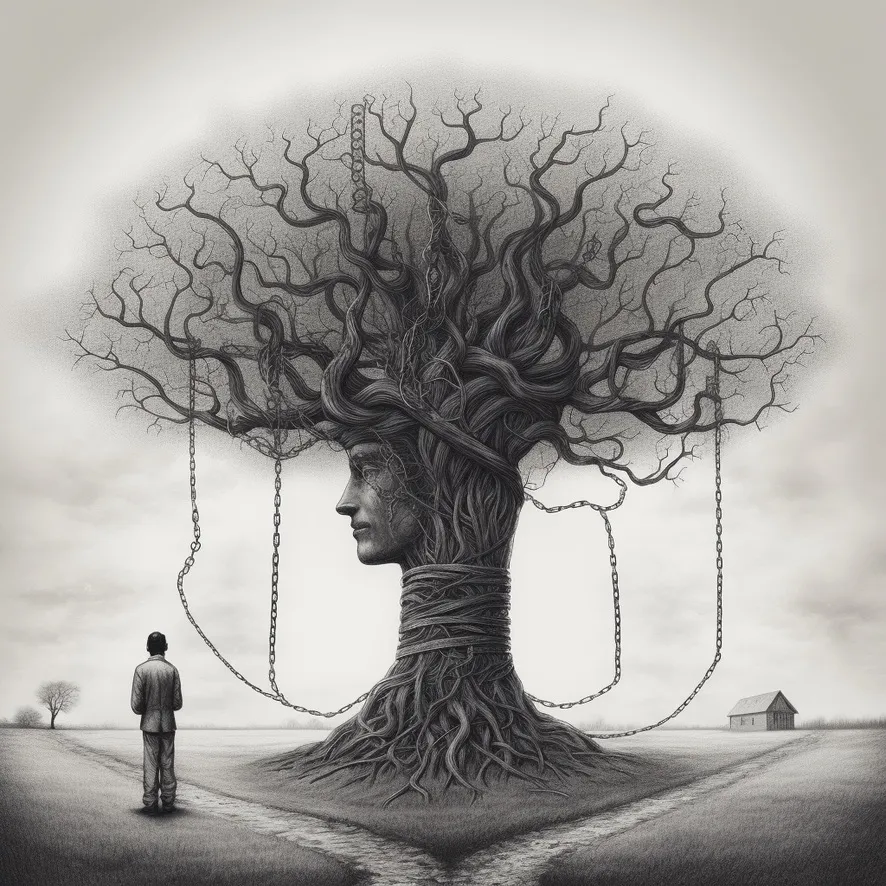The Charlemagnes of AI: Chain-of-Thoughts and Tree-of-Thoughts

Deep in the world of artificial intelligence (AI), an entity of striking potential has emerged, the Large Language Models (LLMs) such as GPT-3. Picture these LLMs as glittering threads, imbued with tremendous potential, woven into the expansive fabric of AI. Yet, unfurling these threads to cover the vast, challenging terrain of complex reasoning tasks remains an ongoing endeavor.
In this context, two particularly intriguing methodologies have risen to prominence: the Chain-of-Thoughts (CoT) and the Tree-of-Thoughts (ToT) frameworks. Each provides a unique approach to harness and guide the expansive capabilities of LLMs. The analogy of Charlemagne, the legendary ruler who shaped a continent, seems apt here. Much like Charlemagne’s influence in carving out a new era, these frameworks have the potential to sculpt and channel the creative outbursts of LLMs into systematic, organized thought processes.
Think of the Chain-of-Thoughts framework as humanity’s initial exploration of waterway engineering, akin to the construction of a series of simple yet effective canal locks. CoT represents a strategy that fosters a steady, sequential progression of thoughts. It cleverly utilizes a large language model in tandem with a queue, serving as a repository of user inputs and model outputs. Each fresh thought introduced benefits from the accumulated wisdom of past interactions, fostering continuity and coherence in the generated outputs.
However, as river navigation evolved, the simpler canal lock systems often proved insufficient. True revolution in transport and trade came about with the advent of complex networks of canals, branching out to connect disparate waterways. The Tree-of-Thoughts is akin to such a canal system. This model offers a more nuanced control over LLMs, weaving together a large language model, a memory module, a prompter, and a checker to deliver structured, coherent conversations.
The CoT framework’s approach of merely feeding the sequence is extended in the ToT architecture. The memory module functions akin to the expansive storage vaults of ancient monasteries, preserving the essence of the ongoing dialogue and preventing any potential loss of context. The prompter, like a seasoned mariner, expertly steers the conversation, while the checker serves as a vigilant guardian, ensuring the validity and integrity of the responses generated by the LLM.
These two models, the CoT and the ToT, were subjected to a thorough test of their capabilities through the challenge of solving Sudoku puzzles. Both models demonstrated superiority over conventional LLM-based solvers. However, the ToT framework, with its intricate structure, diligent context preservation, and stringent response validation, had a discernible edge in terms of success rates.
See our new briefing on Tree of Thoughts
The potential economic and social implications of these models are monumental and intricate. Imagine significantly revolutionizing customer service through coherent, context-aware AI conversations, or transforming education by personalizing learning experiences. The far-reaching impacts of these AI models could ripple through society in ways we can only begin to fathom. However, just as Charlemagne navigated a convoluted world of alliances and power dynamics, we are tasked with traversing potential ethical dilemmas and the potential displacement of human roles brought about by AI technology.
The Tree-of-Thoughts framework, building on the fundamental ideas of the Chain-of-Thoughts model, adds a sophisticated layer that substantially drives enhanced performance. As we stand at the threshold of an exhilarating era in AI, much like Charlemagne at the precipice of shaping Europe, the AI community holds the power to steer the future of technology. We bear the responsibility to guide these AI advancements in a direction that maximizes their potential while mitigating potential societal disruptions. As the AI landscape continues to evolve, the onus is on us to ensure that these AI ‘Charlemagnes’ become benefactors, not threats, to our society.